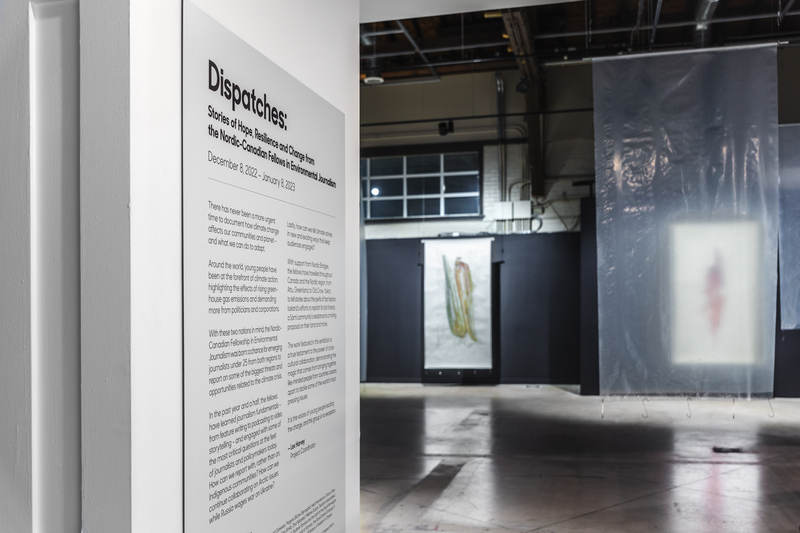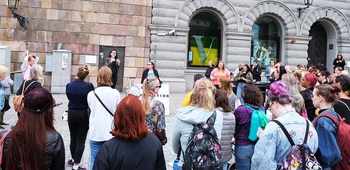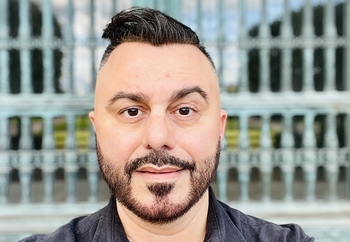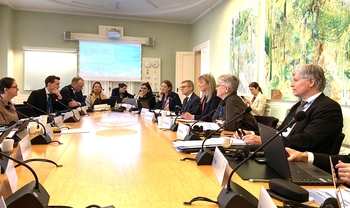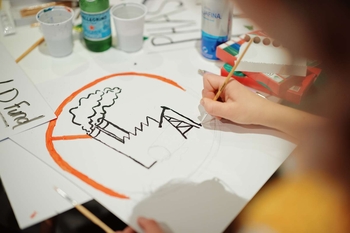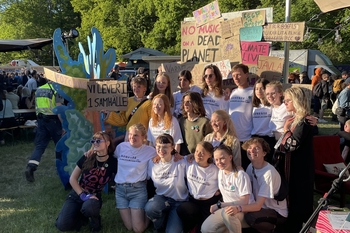Young reporters document the climate crisis with transatlantic exhibition
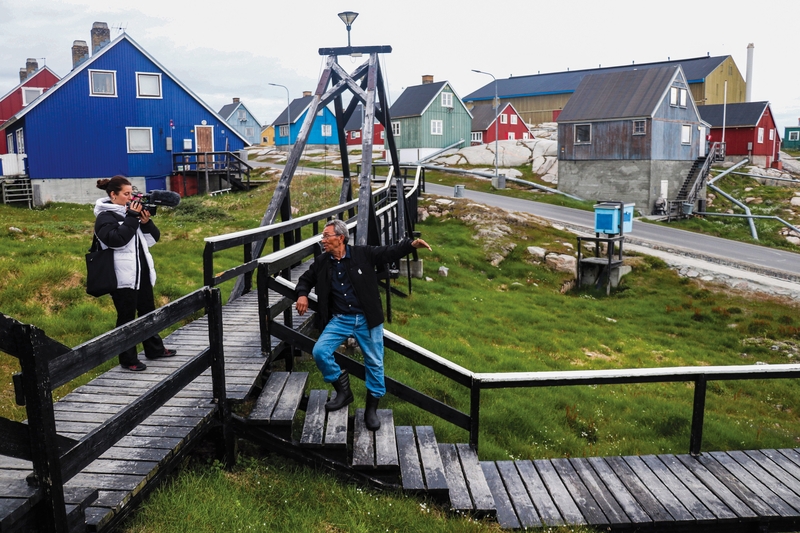
"Reflections from Attu", photo from the Dispatches exhibition at Harbourfront Centre in Toronto. Part of Nordic Bridges.
The Nordic-Canadian Fellowship in Environmental Journalism was launched in 2021 as an Open Call inviting young journalists to join in an 18-month course of cross-border inspiration and learning with a focus on both local and global consequences of the climate crisis. Emphasis has been on evidence-based storytelling, with respect for the communities and people involved.
“Young people have been at the forefront of global climate action. As the climate crisis accelerates, youth-led, powerful journalism will play a crucial role in spotlighting important issues and holding power to account,” said Lex Harvey, journalist and Fellowship Coordinator, at the outset of the programme.
The outcome of the Fellowship is now at display at Harbourfront Centre in Toronto as part of the final month of Nordic Bridges, a year-long Nordic cultural initiative in Canada.
Young people have been at the forefront of global climate action. As the climate crisis accelerates, youth-led, powerful journalism will play a crucial role in spotlighting important issues and holding power to account.
Dispatches from the climate frontier
The exhibition features stories of hope, resilience, and change, told by young people who themselves have grown up with the climate crisis. It poses critical questions at a critical time in history and shows the power of cross-cultural collaboration, oceans apart.
It opens shortly after the UN Climate Summit COP27 in Sharm el Sheikh and with the global biodiversity conference COP15 just finishing in Montreal. So, it gives perspective to a worldwide dialogue going on around us.
The young journalists have covered wide ground, starting out in Greenland, where Teaghan Haysom and Thomas Kellerman Hansen have talked to fishermen who are faced with the paradox of climate change. While they are reaping the benefits of warmer seas through a richer, more diverse fish stock, the warmer weather also threatens the very basis of their culture, leaving them conflicted about the change.
Other fellows have focused on biodiversity like Fern Marmont and Ólöf Rún Erlendsdottír who have followed the fight to build and preserve forests in Iceland and Canada, respectively, or Joël Ngomi and Sara Tingström who have explored urban farming and the ecological mindset shift that grows from it, providing both a connection to nature for city dwellers in general and social justice in underprivileged areas.
Circular moves ahead
Textiles account for 10% of global CO2 emissions, and Andrea Kunz Skrede and Erica Ngao explore how the Nordics are trying to become a leader in sustainable fashion; an ambition that is in stark contrast with both production and consumption patterns in the Nordics, however, despite the many innovative designers and companies struggling to develop circular business models, as the two writers show.
The indigenous First Nation Peoples in Northern Canada interviewed by Laurie Trottier lead a sustainable life of a different fashion and talk about the many solutions they have to offer the world when it comes to a sustainable co-existence with plants and animals. Similarly, Lauren Beauchamp and Norah Lång who have met with Sámi reindeer herders trying to protect their reindeer livelihood from big international corporations, also tell a story of Indigenous people co-existing with nature for better or worse.
Telling their stories
Common to all the stories told by the young journalists is the aim to engage with people and communities affected by climate change and tell their stories eye to eye, in their own voice.
This is nowhere clearer than in a close-up and personal documentary describing climate change in Greenland that rounds off the anthology accompanying the Dispatches exhibition. Diellza Murtezaj and Meral Jamal visit a community in West Greenland vastly different from anything they have ever known and sum up their experience of the changing community like this, when out sailing with their host, Akatu Jakobsen:
“It was an example of letting go of the talking and just trying to experience the feeling of being there. It’s something we’re not always told to seek as young journalists – what it all feels like. Journalism relies on facts, on the physical, on things that are said and done. But climate change is as much a feeling as it is a fact. And the knowledge that people, like Akatu Jakobsen, are seeing their lands change and not always having a say in how to preserve it provided some much-needed perspective on this lived reality for us.”
Climate Fellows
The Nordic-Canadian Fellowship in Environmental Journalism offered this unique opportunity to emerging journalists aged 18–25 from the Nordic Region and Canada. All in all, the young fellows worked with eight mentors and were taught both basic skills and advanced reporting. And the results have been impressive, as shown by the Dispatches exhibition.
“This program has shown the importance of journalism — and particularly environmental journalism — that crosses borders” sums up Fellowship Coordinator Lex Harvey.
The Dispatches exhibition is on from December 8 to January 8 next year. But the bonds built between the young participants will last for years and hopefully add impetus to the crucial task of documenting the consequences of the climate crisis lying ahead.
There are no future tours planned for the exhibition, but the "Dispatches" book is scheduled to be published online in 2023.
About the Nordic-Canadian Fellowship in Environmental Journalism
The Nordic-Canadian Fellowship in Environmental Journalism offers young journalists from the Nordic Region and Canada the opportunity to learn and work together. The programme is run by Harbourfront Centre in Toronto as part of the cultural initiative Nordic Bridges 2022 and with funding from the Nordic Council of Ministers.
